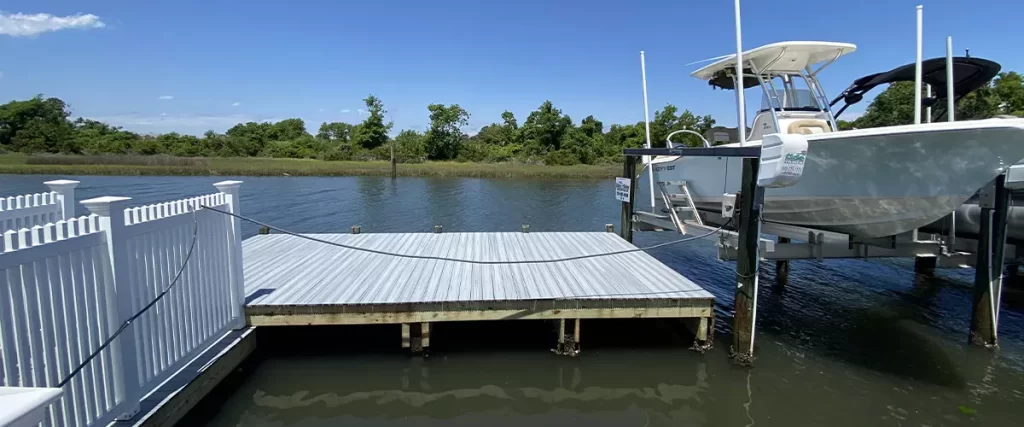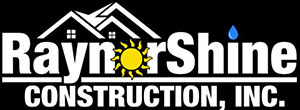When you own waterfront property, the dream dock starts with one practical step: the right dock building permit.
North Carolina’s waterways are shared spaces, and the rules are designed to protect navigation, neighbors, and water quality. A smooth project depends on knowing which local authorities have jurisdiction, what documents a permit application needs, and how to show your proposed dock meets local regulations from the first page you submit.
Do You Need A Dock Permit?
Most new dock construction, major repairs, floating docks, or boat docks that change size or footprint require permits.
Even a modest gangway or a switch from a fixed pier to a floating system can trigger review.
Think of it this way: if your project alters the shoreline, adds a permanent structure, or could influence public access or water quality, you should plan on permits and a short permitting process before installing anything.
Who Reviews Your Project
North Carolina permitting depends on location. Coastal waterways, reservoirs, and city lakes each have their own process. You may interact with:
- A state coastal program if you’re on estuarine waters, which focuses on navigation, setbacks, and environmental protection.
- The U.S. Army Corps of Engineers for work in navigable waters, especially when piles, fill, or dredging are involved.
- A lake or reservoir manager that issues shoreline approvals and maintenance standards for structures on controlled pools.
- Your city or county’s local zoning office and inspections department to confirm setbacks, electrical work for lifts or lights, and compliance with local ordinances.
If you find a permit page or example from Florida or another state, treat it as background only. Requirements in FL don’t match North Carolina, and copying forms from a different jurisdiction can slow review.

What To Include With A Permit Application
Review staff want clear, complete information they can trust. Helpful packets typically include:
- A site sketch that shows the proposed dock, lengths, widths, and distances to neighboring structures and projected side property lines on the water.
- Water depth notes along the centerline of the dock, plus bottom conditions where piles or anchors will land.
- Detailed plans describing materials, anchoring, and any modifications to existing structures.
- Photos of the shoreline and nearby docks, so reviewers can visualize the location and boat traffic patterns.
- Owner authorization, contractor information, and insurance if the department requires it.
Some projects also ask for a brief environmental impact assessment, especially in sensitive areas. That description focuses on how you’ll minimize turbidity during construction, protect vegetation, and maintain water quality.
Common Rules You’ll Encounter
Guidance varies by municipality and waterbody, but certain themes show up again and again:
- Keep the structure reasonable in scale, with a total length and platform area that don’t crowd channels or neighbor access.
- Respect riparian lines so your dock doesn’t swing into a neighbor’s fair use area.
- Choose materials and fasteners that hold up in a wet environment and won’t leach into the water.
- Maintain the dock. Permits often include maintenance standards so damaged structures are repaired or removed before they become hazards.
If you need additional information mid-review, the agency will send a request. Quick replies keep the clock moving.
Inserts, Floats, Lifts, And Covers
Not all docks are alike. A small fixed pier with a tie-up platform is reviewed differently than a multi-slip pier with floating docks, a covered lift, or kayak launches.
Your description should call out each component: the walkway, the platform, the floating sections, the boat lift location, and any roofed areas. If you’re switching from one system to another, explain why lower water levels, shifting sandbars, or a need for better public access around the tip of your pier are good examples reviewers appreciate.
Repairs vs. New Dock
Replacing a few piles, re-decking, or like-for-like repair may move faster than a new dock. Expansions, roof additions, or relocating slips are treated as a new dock or a substantial modification.
If the existing structure was never permitted, you’ll likely need to bring it into compliance before a certificate can be issued on the replacement.
How Long The Process Takes
Timelines depend on your location, the scale of the project, and how complete your submittal is. Straightforward proposals with clear drawings often review in weeks. Larger layouts that push length limits, or projects in narrow waterways with heavier boat traffic, take longer because staff need to confirm navigation and environmental details.
Holiday seasons and high-volume months can also add time. If you want to expedite review, prepare clean forms, provide the necessary forms up front, and speak with the local person handling your area before you file.
Costs To Expect
There are typically agency fees, possible survey costs, and plan preparation if a designer or contractor draws your detailed plans.
Lakes managed by utilities or reservoir programs sometimes include shoreline inspection fees. Budget for permitting before you order materials, so you can decide on finishes and hardware with a realistic total in mind.
How To Keep It Moving
A little planning goes a long way:
- Confirm jurisdiction first. Different departments, different forms.
- Walk the site at normal pool level and note water depth and neighbor dock locations.
- Sketch the proposed dock with measurements, then add photos to the packet.
- Call the local office with questions about setbacks, length caps, or lift placement before you submit.
- Prepare your application carefully, sign where required, and include contact information for the owner and the contractors.
- Keep a single point of contact for the agency, so questions don’t get lost
If you need to appeal a staff decision, most municipalities provide an appeals path. A respectful, well-documented request that addresses the rule and the intent behind it has the best chance of success.
After Approval: Build What You Drew
Once your dock permit is issued, build exactly what you submitted. Mid-stream changes can jeopardize compliance and force re-review.
Keep the permit on site, follow the construction notes for erosion control and access limits, and schedule inspections when required. When the project is complete, some waterbodies ask for a final photo set to close the file.

Frequently Asked Questions
Do small floating docks require permits?
Most do. Size and location determine whether you qualify for a faster, general authorization or need a more detailed review.
What if my shoreline is shallow?
Your plan may need a longer walkway to reach safe depth. Reviewers also check public trust concerns so the dock doesn’t extend into a channel.
Can I apply online?
Many programs now accept online applications. If a website lists a specific page for your waterbody, follow those forms rather than a generic template.
What about insurance?
Some agencies ask for proof of contractor insurance or owner acknowledgment of maintenance responsibilities, especially for larger projects.
I found a form labeled FL. Can I use it?
No. Florida forms don’t apply to North Carolina. Use the forms provided by the department with jurisdiction over your property.
Why Work With A Builder Who Permits Every Week
A team that lives in this process will help you navigate regulations without guesswork.
They’ll prepare drawings that check the right boxes, anticipate questions about materials and alignment, and coordinate with the local zoning office, the city or county department, and any shoreline manager.
That approach reduces revisions, minimizes field changes, and helps you obtain the permit the first time you submit it.
Raynor & Shine Construction handles dock permitting requirements and dock construction across North Carolina, from the first request for jurisdictional guidance to the last inspection.
We prepare application packets, coordinate with local authorities, and build durable docks that meet the rules and look great.
If you want help to obtain the right dock permit, create detailed plans, and minimize delays in the permitting process, call us at (910) 985-8064 or contact us. We know the process, the people, and the practical materials that last on the water.
